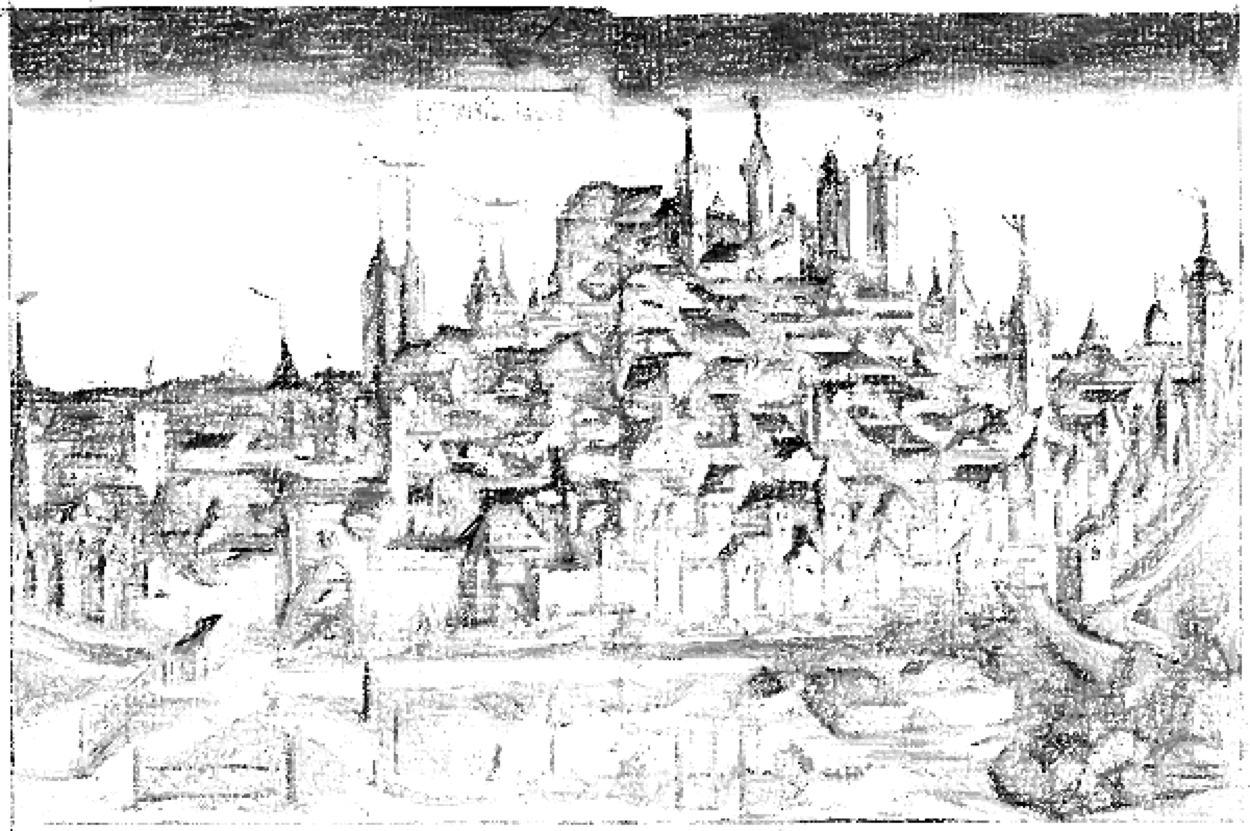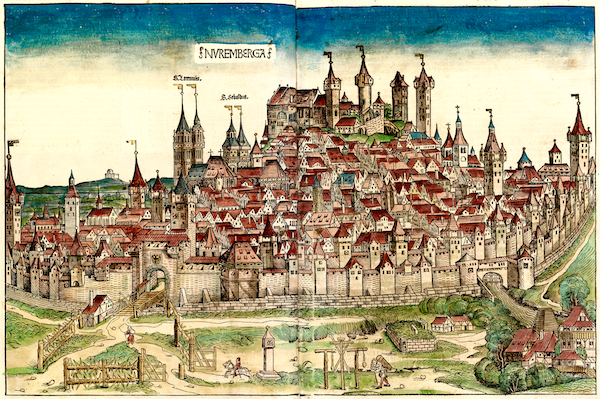Music Guide Mastersingers
Wagners Oevre holds many musical mysteries. The opera The Mastersingers of Nuremberg:
- How do the ideals of the Meistersinger guild appear in music?
- What does the dotted rhythm of many motifs mean?
- What secret lies in the change in Walther's music?
The Mastersingers music guide provides answers. A short synopsis of each scene provides an immediate overview.
The leitmotifs and musical design of the work are clearly explained using musical examples.
The
audio samples make the explanations easy to understand.
Scope
- 64 pages
- 47 sheet music and audio examples, playable in the browser of your smartphone or PC
Reading sample
The masters, however, indignantly reject this proposal as an encroachment on their artistic decision-making sovereignty. Sachs makes another attempt to push through his proposal, in which he develops the nature-rule motif into an art motif:
♫ Example 20: Derivation art motif

The motif rises high and emphasizes the ideals of art. The beginning is similar to the rule of nature motif and the beginning and the concatenation of the three guild’s ideals motifs are also found in the Mastersingers motif (example 1).
Pogner's motion to allow Walther to audition for admission to the guild is accepted. The knight steps forward and we hear his own motif, which Beckmesser soon caricatures disparagingly:
♫ Example 21: Stolzing, envy and Beckmesser motif

Knight Stolzing, whose motifs are normally more complex and longer lasting melodies, adopts here the dotted "bourgeois rhythm" in his formal introduction: he would like to be part of the guild in order to be able to win Eva. Beckmesser's envy motif is a bleating diminution. Its second part also occurs alone and is called the Beckmesser motif.
Walther reports that he learned poetry from the 12th century Minnesinger Sir Walter of Vogelweid and the art of singing from the birds. (...)
Samples
To hear all the audio examples click on the image


- Mastersingers’ motif
- Chroal of baptism
- Courtship motif
- Eva motif
- Springtime’s behest and passion motif
- Resentment motif
- David motif
- King David motif
- Competition motif and delight sequence
- Liveliness motif
- Excitement trill
- Derivation singing art motif
- Derivation cobbler’s labor motif
- Chalk stroke motif
- Prentices motif
- Chaplet motif
- Guild’s motifs
- Mid-summer day motif
- Derivation nature rule motif
- Derivation art motif
- Stolzing, envy and Beckmesser motif
- Vogelweid motif
- Scorn motif
- Derivation friendship motif
- Nuremberg motif
- Derivation Elder motif
- Sprimgtime's behest motif
- Derivation grace motif
- Derivation hope motif
- Derivation rejection motif
- Beckmesser's passion
- Summer night’s magic motif
- Lute motif
- Work lust motif
- Cobbler song
- Derivation Cobbler's song
- Beckmesser's song
- Beckmesser's courtship motif
- anger motif
- beating motif
- Delusion motif
- Awake choral
- Dream motif
- Prize song (stanza)
- Prize song (love theme)
- resignation motif
- Baptismal verse moti
 MusiCosa
MusiCosa
